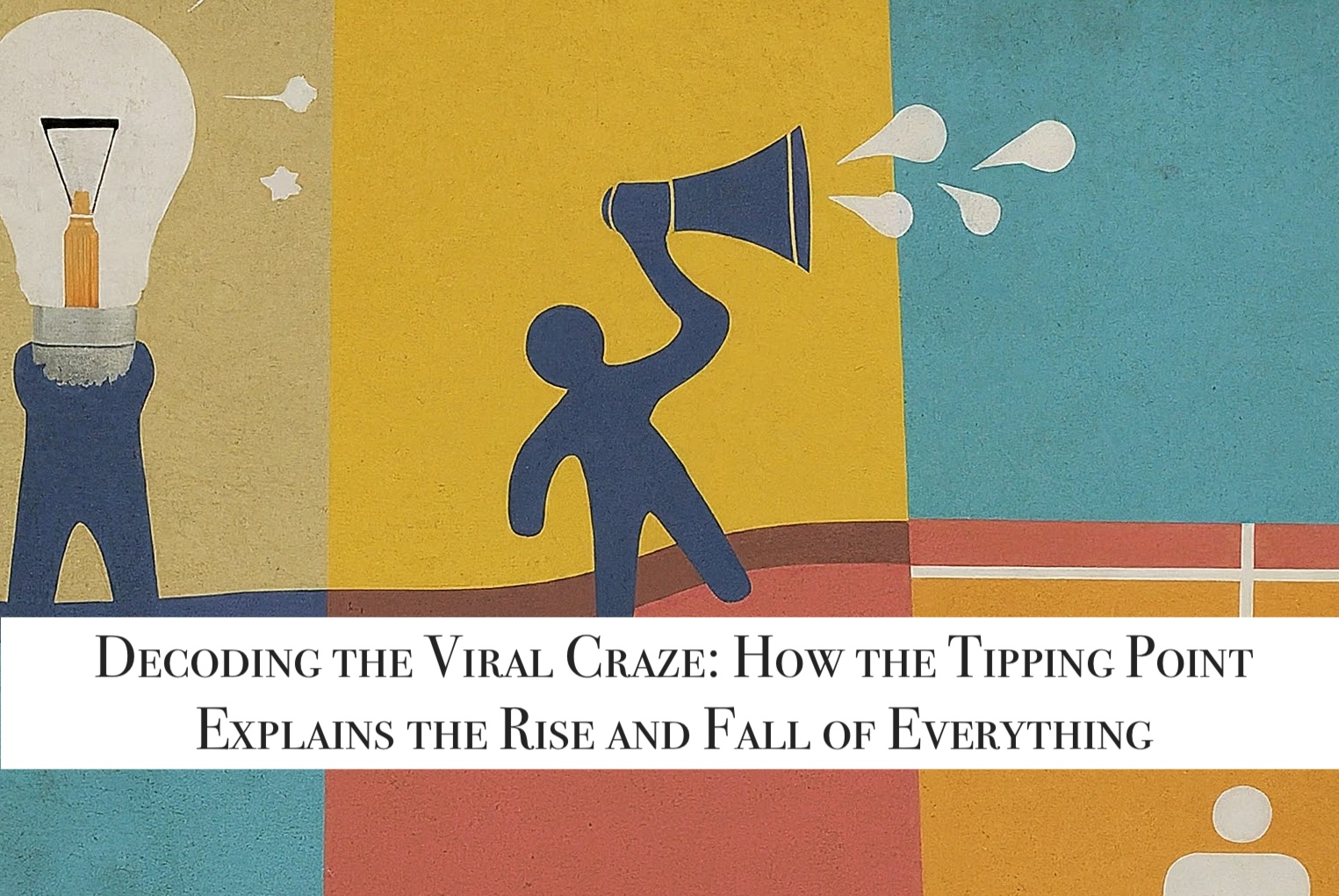Decoding the Viral Craze: How the Tipping Point Explains the Rise and Fall of Everything

Remember fidget spinners? Those whirring contraptions that seemed to be omnipresent in 2017, clutched by every schoolchild and office worker alike, before disappearing as quickly as they arrived? The rise and fall of this peculiar trend, along with countless others like it, can be illuminated by Malcolm Gladwell's insightful book, "The Tipping Point."
Gladwell argues that ideas, products, and behaviors spread like epidemics, reaching a critical mass – the tipping point – where they become unstoppable and sweep through a population. But what factors propel them to this point, and why do some trends fizzle out while others achieve lasting success?
The Power of the Few: Connectors, Mavens, and Salesmen
Gladwell identifies three key players who act as catalysts for social epidemics: Connectors, Mavens, and Salesmen.
- Connectors: These are the social butterflies, the individuals with a knack for bridging social circles. They know everyone and seamlessly navigate different social groups. In the fidget spinner case, connectors could have been the kid with cousins in various schools, spreading the trend across different social bubbles. Imagine a connector bringing a fidget spinner to a school assembly, sparking curiosity and conversation, and igniting the initial buzz.
- Mavens: Think of Mavens as the trusted advisors, the go-to people with specialized knowledge. In the world of trends, this might be a fashion blogger with a devoted following or a fitness influencer known for their innovative workout routines. When a Maven embraces a trend, it lends it credibility. A popular fitness YouTuber incorporating fidget spinners into their workouts could have significantly boosted their appeal among viewers.
- Salesmen: These are the persuasive communicators, adept at convincing others to adopt a new idea or product. While not as readily apparent in the fidget spinner phenomenon, Salesmen play a crucial role in promoting new fitness programs or social movements. Imagine a charismatic fitness instructor who masterfully weaves the benefits of fidget spinners into their class, effectively converting skeptical participants into enthusiasts.
The Art of the Sticky Message: Crafting the Perfect Pitch
Beyond the influence of these key figures, Gladwell emphasizes the "Stickiness Factor." For a trend to spread like wildfire, it needs to be memorable and easy to communicate. Fidget spinners were a prime example – simple, visually interesting, and relatively inexpensive. These qualities made them easy to share and discuss, fueling their rise in popularity.
The Context Canvas: Where and When Matters
The final piece of the puzzle is "The Power of Context." Social norms, economic conditions, and even physical environments can all influence whether a trend takes hold. Fidget spinners might have resonated in 2017 due to a growing focus on fidget toys for stress relief, coupled with the rise of social media challenges that showcased their supposed benefits. Imagine a time when fidgeting in class was frowned upon, but with a growing acceptance of fidget toys and the explosion of social media, the environment was ripe for the fidget spinner craze.
Malcolm Gladwell's "The Tipping Point" provides a fascinating lens through which to view the rise and fall of trends like fidget spinners. By dissecting the roles of key players and the elements that make a message stick, we can better understand why certain ideas catch fire while others fade away. So, the next time you see a trend taking off, look for the Connectors, Mavens, and Salesmen behind it, and consider how the message and context are driving its success.



Leave a Reply
You must be logged in to post a comment.